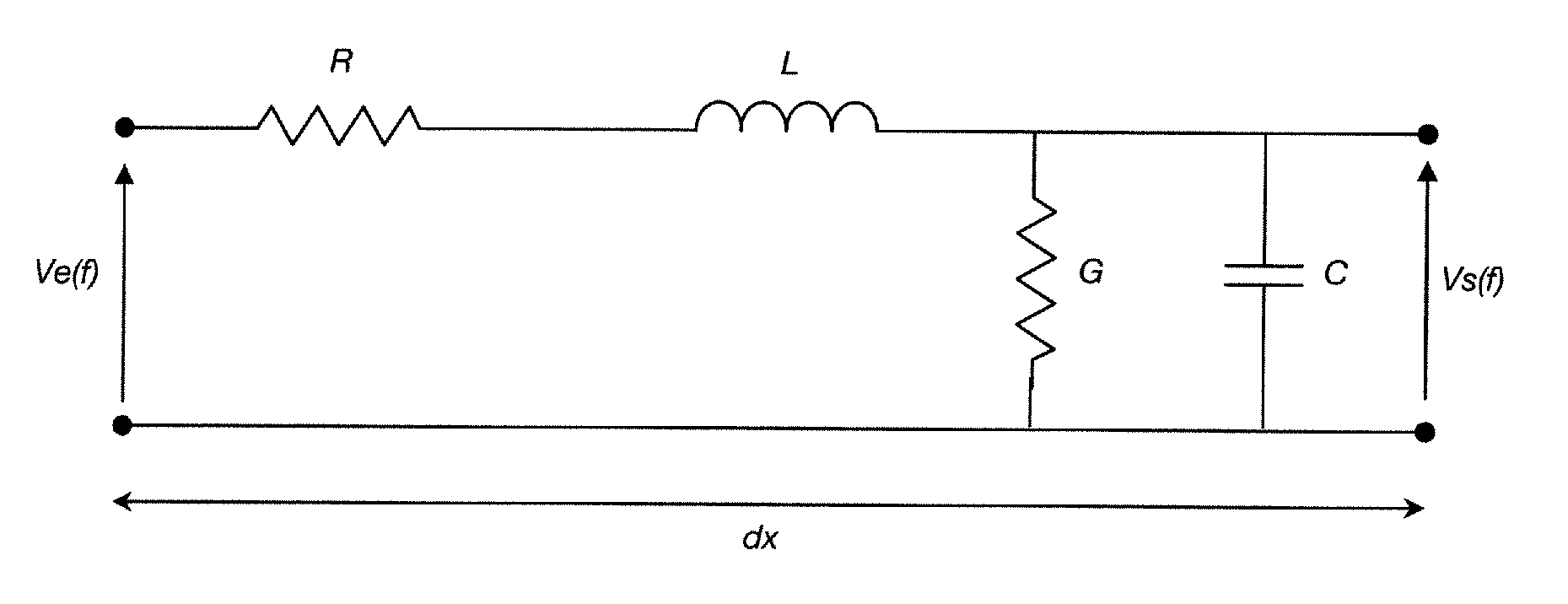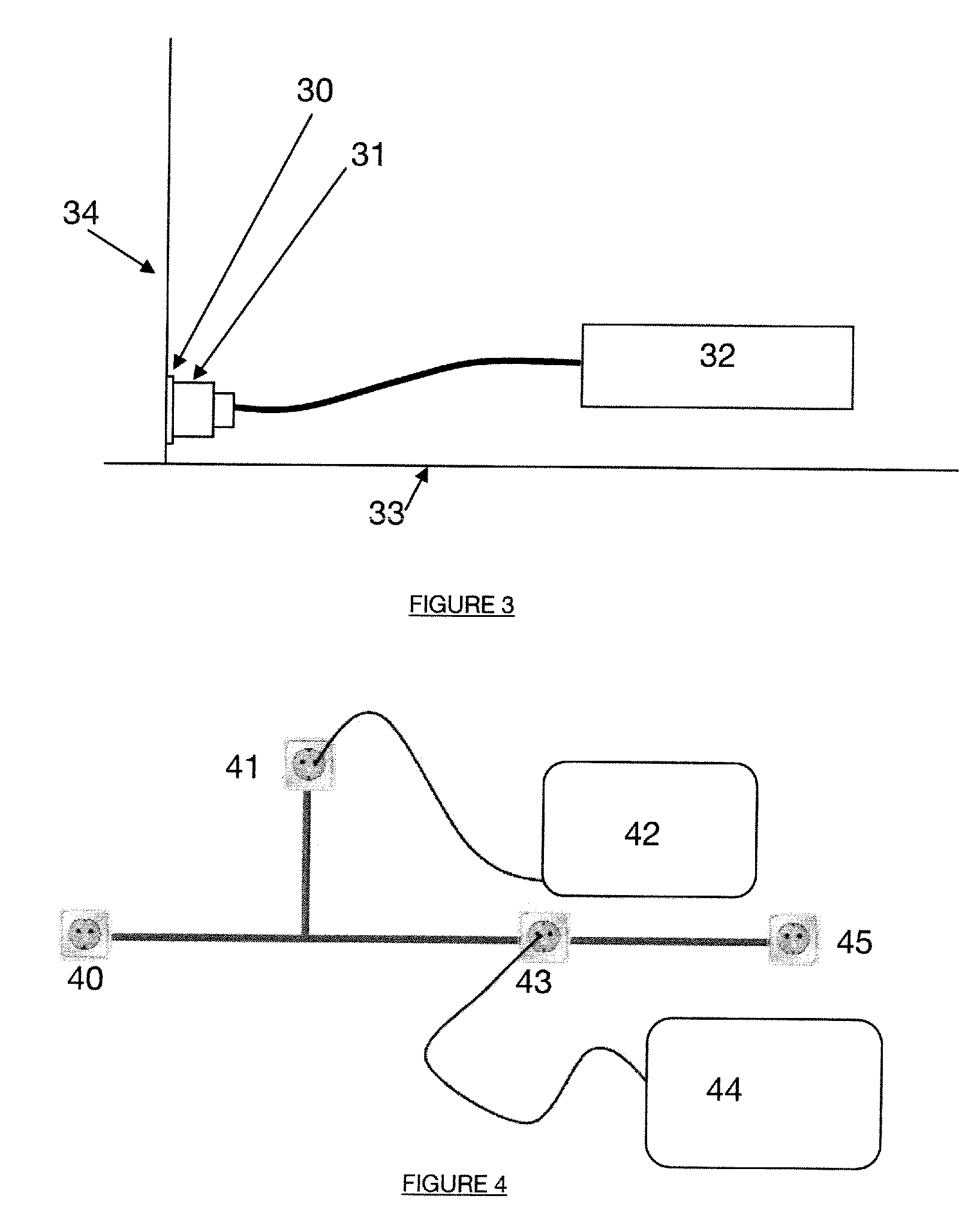Power line transmission
- Summary
- Abstract
- Description
- Claims
- Application Information
AI Technical Summary
Benefits of technology
Problems solved by technology
Method used
Image
Examples
Embodiment Construction
[0068]The general principle of an aspect of the disclosure is based on using a physical device in a power line transmission system to adapt at least some network terminations (i.e. at least some socket outlets) to the characteristic impedance of domestic electrical mains wiring to prevent some kinds of interference entering the mains wiring.
[0069]One particular embodiment is described below in the context of a home equipped with a power line transmission system.
[0070]Signal attenuation is a recurrent problem in power line transmission systems, even though the distances concerned are short (at most a few hundred meters). This stems in particular from the large number of branch connections, i.e. secondary branches connected to the main path, ending at an open circuit or at devices that do not have an impedance matching that of the line.
[0071]The propagation channel is therefore subject to very high attenuation in homes including a large number of electrical socket outlets.
[0072]What i...
PUM
 Login to View More
Login to View More Abstract
Description
Claims
Application Information
 Login to View More
Login to View More - R&D
- Intellectual Property
- Life Sciences
- Materials
- Tech Scout
- Unparalleled Data Quality
- Higher Quality Content
- 60% Fewer Hallucinations
Browse by: Latest US Patents, China's latest patents, Technical Efficacy Thesaurus, Application Domain, Technology Topic, Popular Technical Reports.
© 2025 PatSnap. All rights reserved.Legal|Privacy policy|Modern Slavery Act Transparency Statement|Sitemap|About US| Contact US: help@patsnap.com



